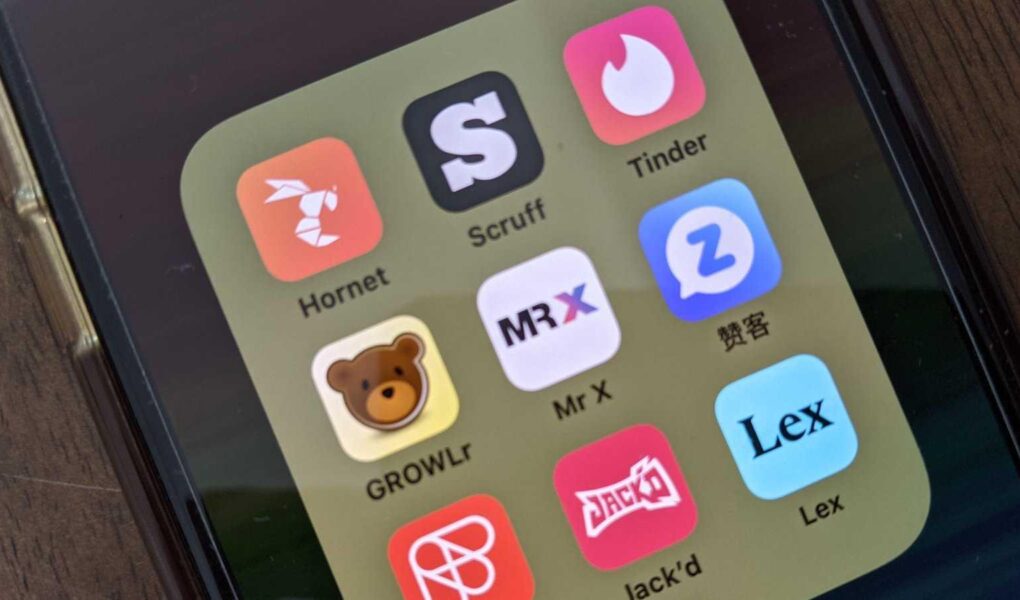In a digital age where connections can be forged with just a swipe, the landscape of online dating has evolved far beyond traditional matchmaking. Enter the realm of “Grindr-like” websites, platforms revolutionizing the way individuals seek companionship, romance, or simply a friendly conversation. Originally designed to cater to the LGBTQ+ community, these apps and websites have sparked a proliferation of spaces that serve a variety of identities, interests, and preferences. This article explores the dynamic world of Grindr-esque alternatives, delving into their unique functionalities, diverse user bases, and the broader implications they hold for social interaction in an increasingly interconnected society. From niche communities to innovative features, we’ll unpack what makes these platforms influential players in the modern dating scene.
Table of Contents
- Exploring the Landscape of Grindr Alternatives for Diverse Connections
- Navigating User Safety: Tips for a Secure Experience on Dating Platforms
- Maximizing Your Profile: Strategies for Authentic Engagement on Grindr Like Websites
- Connecting Beyond Dating: Community and Friendship on LGBTQ+ Apps
- Q&A
- In Retrospect
Exploring the Landscape of Grindr Alternatives for Diverse Connections
The world of online dating is vast and varied, especially with platforms catering to different communities and interests. When seeking connections outside of Grindr, numerous alternatives have emerged, each offering unique features to help users engage in meaningful interactions. Some popular options include:
- Scruff: Known for its inclusive atmosphere, Scruff encourages users to express themselves while catering to a diverse range of identities.
- OkCupid: With its comprehensive questionnaire, this platform fosters connections based on compatibility, appealing to those seeking deeper relationships.
- Tinder: Though not exclusive to LGBTQ+ users, its large user base allows for diverse connections across varying preferences.
- HER: Specifically designed for queer women and non-binary individuals, HER creates a safe space for users to connect and build community.
In addition, niche platforms are popping up to meet the unique needs of various communities. Exploring these options can lead to more tailored experiences, enhancing connection opportunities. For instance, consider platforms such as:
| Platform | Focus |
|---|---|
| Chappy | Men seeking meaningful relationships |
| Bumble | Women initiate conversations; inclusive |
| Men4Men | Community for gay and bisexual men |
These diverse options not only broaden the spectrum of potential connections but also foster a sense of belonging, allowing users to find companionship that resonates with their identity and desires.
Navigating User Safety: Tips for a Secure Experience on Dating Platforms
When exploring alternatives to popular dating platforms like Grindr, it’s crucial to prioritize your safety. Always start with creating a strong password for your account—avoid easily guessable information such as birthdays or names. Additionally, make sure to enable two-factor authentication if the platform offers it; this adds an extra layer of security against unauthorized access. When sharing personal information, consider limiting details until you truly trust the other person. Here are some tips to keep in mind:
- Use a pseudonym: Protect your real name from prying eyes.
- Set boundaries: Decide in advance what information you will share and what you won’t.
- Meet in public places: Always choose a public setting for initial meetings to ensure safety.
Furthermore, keep an eye out for any suspicious behavior. If someone attempts to pressure you into sharing personal photos or financial information, it may be a red flag. Trust your instincts and don’t hesitate to block or report users who make you feel uncomfortable. Here’s a quick reference table of red flags to watch out for:
| Red Flags | What to Do |
|---|---|
| Rushed conversations | Take your time; don’t feel pressured. |
| Vague profile details | Ask questions; if they are evasive, reconsider. |
| Requests for money | Terminate all communication immediately. |
Maximizing Your Profile: Strategies for Authentic Engagement on Grindr Like Websites
To create a standout profile that fosters meaningful connections, it’s crucial to focus on authenticity. This means showcasing your true self rather than conforming to clichés or trends. Consider these strategies to enhance your profile:
- Use Real Photos: Choose recent and genuine images that reflect your personality, avoiding overly edited or misleading pictures.
- Be Honest: Clearly state your interests and what you’re looking for—whether it’s friendship, dating, or something casual.
- Add a Personal Touch: Share a fun fact, a favorite hobby, or a quirky anecdote to make your profile more relatable.
Engagement is about connection, and initiating conversation is the key. Here are effective ways to encourage interaction:
- Ask Questions: Pose interesting questions in your profile that invite others to respond.
- Utilize Humor: A light-hearted joke or witty remark can break the ice and make your profile memorable.
- Stay Active: Regularly update your profile and engage with messages promptly to show you’re approachable and interested.
| Profile Tips | Purpose |
|---|---|
| Real Photos | Build trust and authenticity. |
| Honest Descriptions | Attract like-minded individuals. |
| Engaging Content | Foster conversations and connections. |
Connecting Beyond Dating: Community and Friendship on LGBTQ+ Apps
While LGBTQ+ apps like Grindr are often synonymous with dating and hookups, they have evolved into vital platforms for forging connections beyond romance. Many users seek out these spaces to cultivate friendships, community support, and shared experiences. By joining group chats, participating in local meetups, or engaging in discussions about relevant issues, individuals can find genuine companionship and solidarity. This shift highlights the importance of these apps as safe havens where users can express themselves freely, build trust, and embrace aspects of their identities with others who understand their journeys.
Many other platforms complement this desire for connection, each offering unique features that cater to various aspects of socializing. For instance, some apps focus on interest-based communities, allowing users to connect over hobbies, activism, or mutual favorite activities. Others prioritize events and gatherings, enabling users to find local happenings and build friendships in real life. Here’s a glimpse of a few popular alternatives:
| App Name | Focus Area | Key Feature |
|---|---|---|
| HER | Lesbian & Non-Binary women | Community Events |
| Chappy | Gay Men | Friendship and Dating |
| Tinder | General Dating | Friendship Mode |
| Bumble BFF | Various | Friendship Swiping |
These apps exemplify how technology can facilitate connections, transforming dating platforms into multi-faceted social environments. Users find a rich tapestry of friendship opportunities, enabling deeper bonds while also celebrating the spectrum of experiences within the LGBTQ+ community. As social dynamics continue to change, the role of these apps will remain pivotal in nurturing not only romantic relationships but also lasting friendships and supportive networks.
Q&A
Q&A: Exploring Grindr-Like Websites
Q1: What are Grindr-like websites?
A1: Grindr-like websites are online platforms that cater to specific communities looking for connections, whether for dating, friendships, or networking. These sites use location-based technology similar to Grindr, which primarily serves the LGBTQ+ community, to help users find nearby individuals with shared interests.
Q2: Who typically uses these platforms?
A2: Users range across various demographics depending on the focus of the site. While Grindr specifically targets gay and bisexual men, other similar platforms might cater to lesbians, trans individuals, or niche communities such as polyamorous groups, gamers, or even pet lovers. Each platform has its unique user base and purpose.
Q3: What features do these websites usually include?
A3: Most Grindr-like websites incorporate features such as user profiles, chat functions, photo sharing, and search filters based on interests or preferences. Some platforms may enable video calls, virtual gifts, or community forums, creating an engaging and interactive environment for users.
Q4: How do privacy and safety measures work on these sites?
A4: Privacy and safety are critical aspects of Grindr-like websites. Many platforms implement email or phone verification, allow users to control their visibility, and offer features to block or report inappropriate behavior. It’s crucial for users to familiarize themselves with each site’s safety guidelines and to practice caution when meeting individuals online.
Q5: Are there any notable differences between Grindr and similar websites?
A5: Yes, while Grindr focuses on LGBTQ+ connections, other sites may target broader or more diverse audiences. For example, Hinge emphasizes serious relationships over casual encounters, Tinder appeals to a mixed demographic with both dating and hookup options, and websites like OkCupid provide extensive questionnaires to match users based on compatibility.
Q6: What are the benefits of using these sites?
A6: The benefits include convenience, access to diverse communities, and the ability to connect with individuals outside of one’s regular social circle. Additionally, many sites offer tailored algorithms that enhance the matchmaking process, making it easier to find compatible partners or friends.
Q7: Are there any downsides to using Grindr-like websites?
A7: Potential downsides include the prevalence of superficial connections, misrepresentation, and the possibility of encountering harassment or inappropriate behavior. Furthermore, users may experience “app fatigue,” which can arise from constant swiping and chatting without meaningful outcomes.
Q8: How can one choose the right platform for their needs?
A8: Choosing the right platform involves considering your goals—whether you’re seeking a casual encounter, a serious relationship, or just friendship. Research different websites, read user reviews, and explore each site’s unique features to find one that aligns with your preferences.
Q9: Are these websites evolving with societal changes?
A9: Absolutely. Many of these platforms are adapting to changes in societal attitudes towards gender and sexuality, adding more inclusive categories and features to better serve a wide array of users. This evolution reflects a growing demand for diversity and acceptance in digital interactions.
Q10: What’s the future of Grindr-like websites?
A10: The future seems promising, with increasing technological advancements, such as enhanced neighborhoods and virtual reality features, likely to reshape how people connect online. As societal norms continue to evolve, these platforms will likely become even more inclusive and community-focused, fostering genuine connections in an increasingly digital world.
In Retrospect
As our exploration of Grindr-like websites draws to a close, it becomes clear that the landscape of digital dating is as diverse as the people who inhabit it. These platforms not only cater to different preferences and orientations but also foster communities built on shared interests, identities, and desires. As technology continues to evolve, so too will the ways in which we connect and communicate. Whether for friendship, love, or simply a shared moment, these websites transform the notion of dating into a tapestry of experiences. So, whether you’re a seasoned user or someone contemplating your first foray into this fascinating world, remember that behind every profile is a unique story waiting to unfold. Embrace the journey, stay open-minded, and let the connections you forge shape your narrative in this vibrant digital community.



